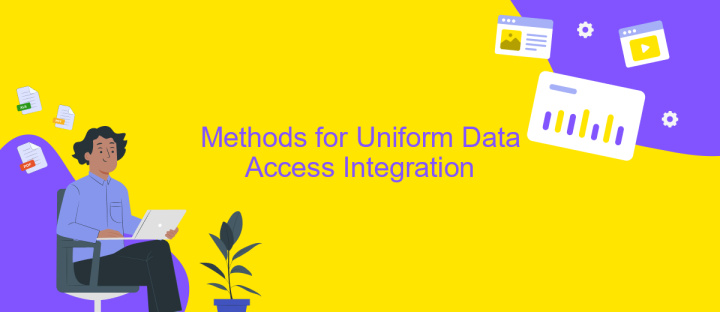Uniform Data Access Integration
Uniform Data Access Integration is a critical concept in modern data management, aiming to provide seamless access to diverse data sources through a unified interface. This approach simplifies data retrieval, enhances interoperability, and ensures consistent data quality across various platforms. By integrating disparate data systems, organizations can achieve greater efficiency, reduce redundancy, and make more informed decisions.
Introduction
Uniform Data Access Integration (UDAI) is an essential concept in the realm of data management, aiming to streamline the way diverse data sources are accessed and utilized. By providing a unified interface, UDAI enables users to interact with multiple databases, file systems, and data streams seamlessly, without needing to understand the underlying complexities of each source. This approach not only enhances efficiency but also significantly reduces the potential for errors and inconsistencies in data handling.
- Improved data accessibility: UDAI ensures that users can easily retrieve and manipulate data from various sources without specialized knowledge.
- Enhanced data consistency: By standardizing data access methods, UDAI helps maintain uniformity across different data repositories.
- Reduced development time: Developers can focus on building features rather than dealing with data integration challenges.
In today's data-driven world, the ability to access and integrate data from multiple sources efficiently is crucial for informed decision-making and operational success. Uniform Data Access Integration provides a robust solution to this challenge, fostering a more cohesive and streamlined data management environment. As organizations continue to adopt and implement UDAI strategies, they can expect to see significant improvements in data quality, accessibility, and overall productivity.
Challenges in Uniform Data Access Integration

Integrating uniform data access presents several challenges, primarily due to the diversity of data sources and formats. Different systems often use various protocols, data structures, and standards, making it difficult to create a seamless data exchange. Ensuring data consistency and accuracy across multiple platforms requires robust data mapping and transformation processes. Additionally, maintaining data integrity while synchronizing real-time updates can be complex, especially when dealing with large volumes of data.
Another significant challenge is ensuring security and compliance during data integration. Sensitive information must be protected through encryption and secure access controls, which can complicate the integration process. Tools like ApiX-Drive can facilitate this by providing automated workflows and pre-built connectors to streamline data integration. However, even with such services, organizations must continuously monitor and update their integration strategies to adapt to evolving data landscapes and regulatory requirements. This ongoing effort is essential to achieve a truly unified and secure data access environment.
Methods for Uniform Data Access Integration

Uniform data access integration involves creating a consistent and efficient method for accessing data across disparate systems. This process ensures that data from various sources can be accessed and utilized in a uniform manner, enhancing data interoperability and reducing complexity. Different methods can be employed to achieve uniform data access integration, each with its unique advantages and challenges.
- Data Virtualization: This method involves creating a virtual data layer that allows users to access and manipulate data without needing to know its physical location or format.
- ETL (Extract, Transform, Load): ETL processes extract data from different sources, transform it into a uniform format, and load it into a centralized repository.
- API Integration: Using APIs to connect different data sources, enabling real-time data access and integration.
Each of these methods offers distinct benefits and can be chosen based on the specific requirements and constraints of the organization. Data virtualization provides flexibility, ETL ensures data consistency, and API integration supports real-time data access. Selecting the appropriate method is crucial for achieving effective uniform data access integration.
Case Studies and Applications

Uniform Data Access Integration (UDAI) has proven to be a game-changer in various industries by enabling seamless data connectivity and interoperability. Companies are increasingly adopting UDAI to streamline their data management processes, thereby enhancing operational efficiency and decision-making capabilities.
One notable case study is from the healthcare sector, where a leading hospital network integrated UDAI to unify patient records across multiple departments. This integration has significantly reduced administrative overhead and improved patient care by providing clinicians with real-time access to comprehensive patient data.
- Retail: Enhanced inventory management and customer analytics.
- Finance: Improved risk assessment and regulatory compliance.
- Manufacturing: Streamlined supply chain operations and predictive maintenance.
In the realm of e-commerce, a major online retailer utilized UDAI to consolidate data from various sales channels. This has led to more accurate demand forecasting and personalized marketing strategies, resulting in increased sales and customer satisfaction. The versatility and effectiveness of UDAI make it an invaluable tool across diverse applications.
- Automate the work of an online store or landing
- Empower through integration
- Don't spend money on programmers and integrators
- Save time by automating routine tasks
Conclusion
In conclusion, the concept of Uniform Data Access Integration plays a crucial role in streamlining data management across diverse systems. By ensuring consistent access protocols and reducing the complexity of data retrieval, organizations can significantly enhance their operational efficiency and decision-making processes. This approach not only simplifies data handling but also improves data accuracy and reliability, which are essential for informed business strategies.
One effective tool that facilitates seamless data integration is ApiX-Drive. This service offers a user-friendly platform for connecting various applications and automating data workflows. By leveraging ApiX-Drive, businesses can effortlessly integrate their data sources, ensuring real-time data synchronization and minimizing manual intervention. As a result, organizations can achieve a higher level of data consistency and operational agility, ultimately driving better business outcomes.
FAQ
What is Uniform Data Access Integration?
Why is Uniform Data Access Integration important?
How can I implement Uniform Data Access Integration in my organization?
What challenges might I face during the implementation of Uniform Data Access Integration?
Can I automate data integration tasks with Uniform Data Access Integration?
Time is the most valuable resource for business today. Almost half of it is wasted on routine tasks. Your employees are constantly forced to perform monotonous tasks that are difficult to classify as important and specialized. You can leave everything as it is by hiring additional employees, or you can automate most of the business processes using the ApiX-Drive online connector to get rid of unnecessary time and money expenses once and for all. The choice is yours!


